Nature Trail 4: The Lawn to the White Bridge and back
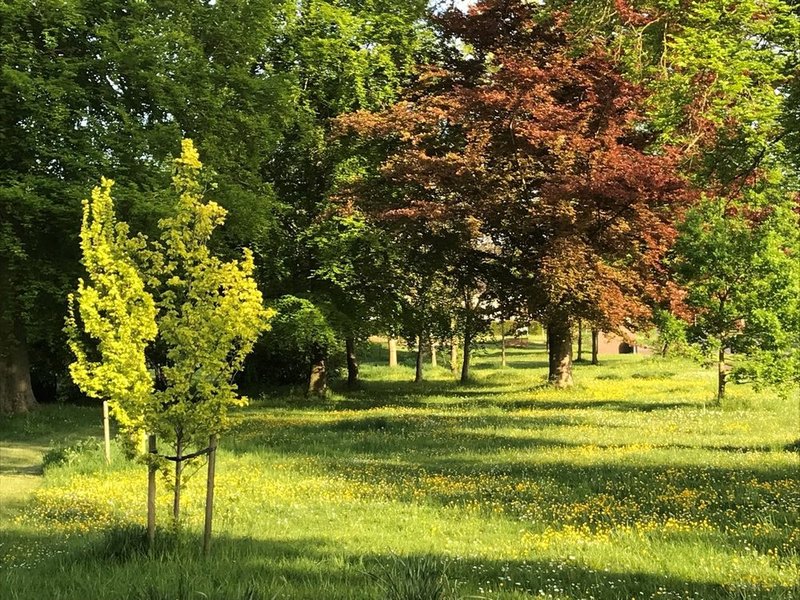 45minute, 1.5 km ramble along pavements, sealed paths and grass. Suitable for buggies. Featuring Mature trees, water meadows, and orchids.
45minute, 1.5 km ramble along pavements, sealed paths and grass. Suitable for buggies. Featuring Mature trees, water meadows, and orchids.
A huge variety of wildflowers and plants grows on this trail, and what you will see depends on the time of year. It might be fun to download a plant identification app such as PlantNet before you set out.
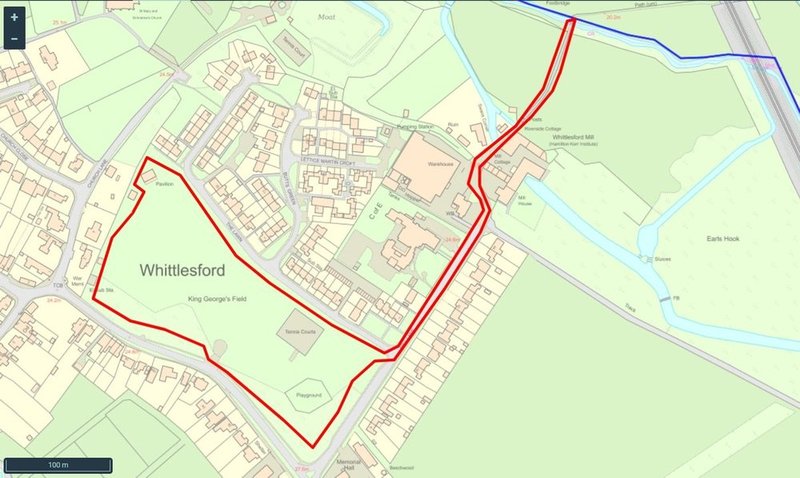
Step 1
Starting at the brick bus stop opposite the United Reformed Church, turn left and stroll along the side of the Lawn.
Look out for:
Low growing plants near the road include flowers in shades of yellow, pink, purple, white and blue. Their names give you a flavour of the diversity that has been nurtured here by careful management: bird's foot trefoil, germander speedwell, wall speedwell, crow garlic, coltsfoot grass, smooth hawksbeard, shepherd's purse, small flowered geranium, black medic, red clover, white clover, plantain, sandwort, bulbous buttercup, sow thistle, dove's foot cranesbill, sticky mouse-ear, ground ivy, wood avens, cleavers, mallow. These plants provide food for a range of butterfly and moth caterpillars, bees and other insects.
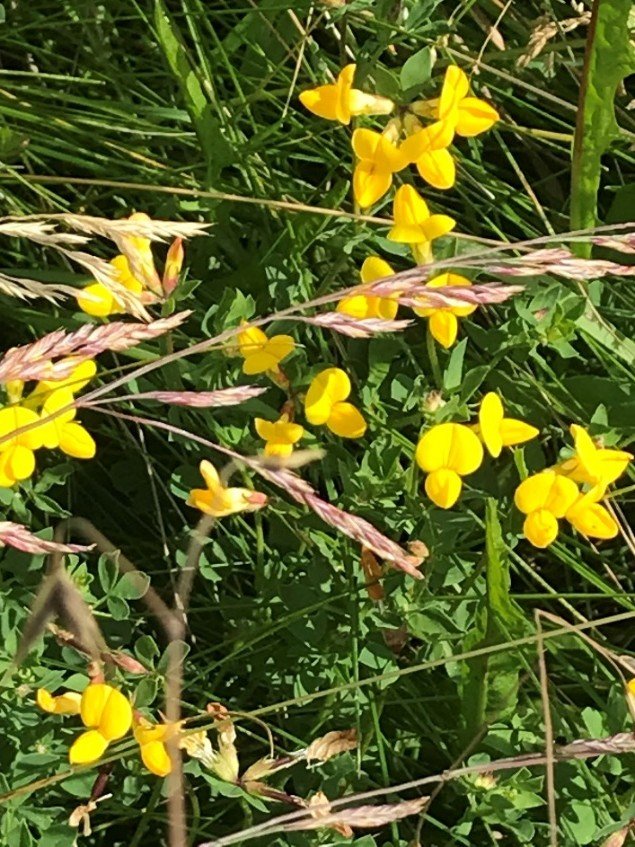
Just at the corner of the grass, a young hornbeam has been planted in memory of Nick Maynard.
Step 2
At the junction, turn left along Mill Lane.
Look out for:
Glance across at the triangle in the road junction, or, if it is safe to cross, go and have a look. In the autumn and winter, it is easy to see that this tiny patch of land has two different types of subsoil, as the plants grow higher on one side of the area than the other.
In summer you can see wild liquorice growing. Although the plant is not rare, it is the only food plant of a rare moth, the Liquorice Piercer, which is small and dark brown with yellow streaks. However, it's not where actual liquorice comes from, so leave it for the Piercers.
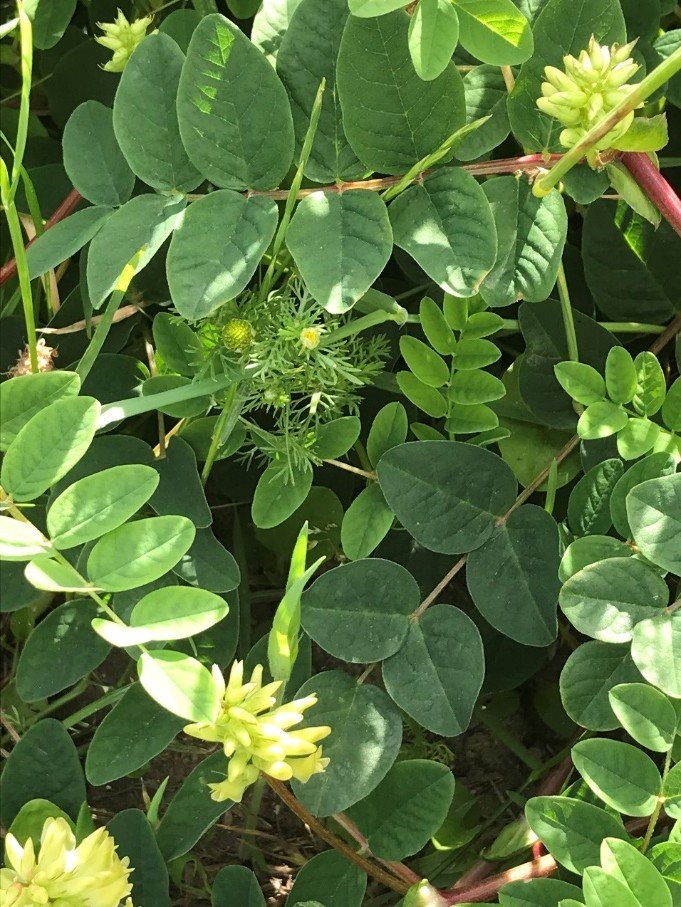
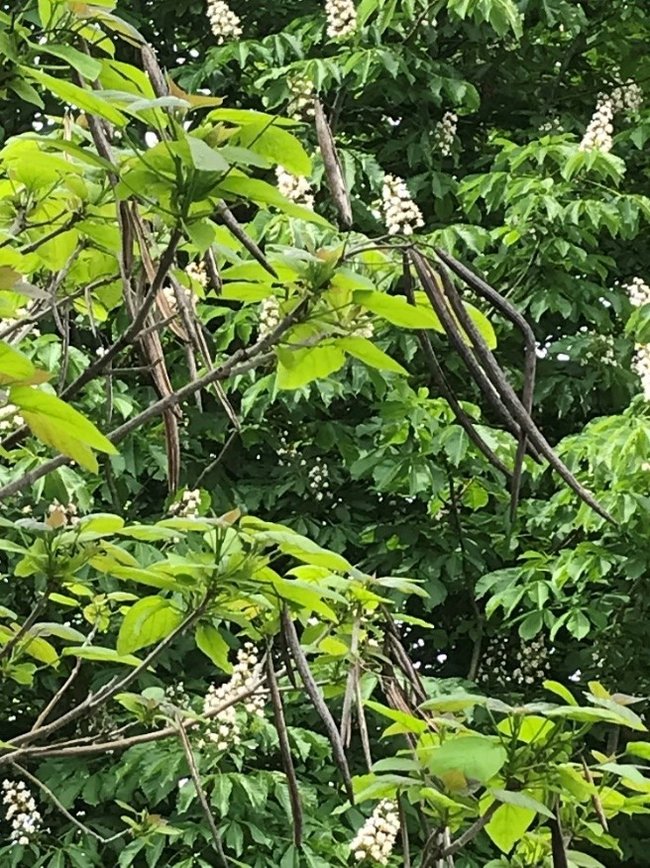
Back on the edge of the Lawn, enjoy the shade of the oaks and beeches, and see if you can spot the Indian Bean Tree, with lime green leaves, white flowers in spring, and foot-long seed pods.
After the large trees, you'll see a young oak, which villagers planted in 2018 to commemorate one hundred years of votes for women.
This is a good point to look across at the large tree to the left of the tennis courts, which is reputed to be one of the finest hornbeams in the county. Traditionally the hornbeam's hard wood was used by the Romans to build chariots, and more recently to make cogs for windmills and hammers for pianos. The hornbeam hedge on the far side of the tennis courts offers year-round shelter to small animals and birds.
Step 3
Keep walking along Mill Lane past the primary school on your left, and follow the road, with care, past the low brick wall by Granta Processors, taking care to look out for trucks.
Look out for:
A variety of plants growing in the shelter of the metal railing by the school including procumbent pearlwort.
The tree growing in the verge just beyond the school noticeboard, opposite number 34, is a Huntingdon Elm, a rare survivor of Dutch elm disease. Before the 1960s these trees were widespread, common and dominant but nowadays it is unusual to see a large one like this. You'll know you are looking at the right tree because the leaves join the stem asymmetrically, coming further down the stalk on one side than the other.
The tree with a black bat box in it is a Norway Maple, and the lime-green leafed tree with deeply furrowed bark at the entrance to the school car park is a false acacia.
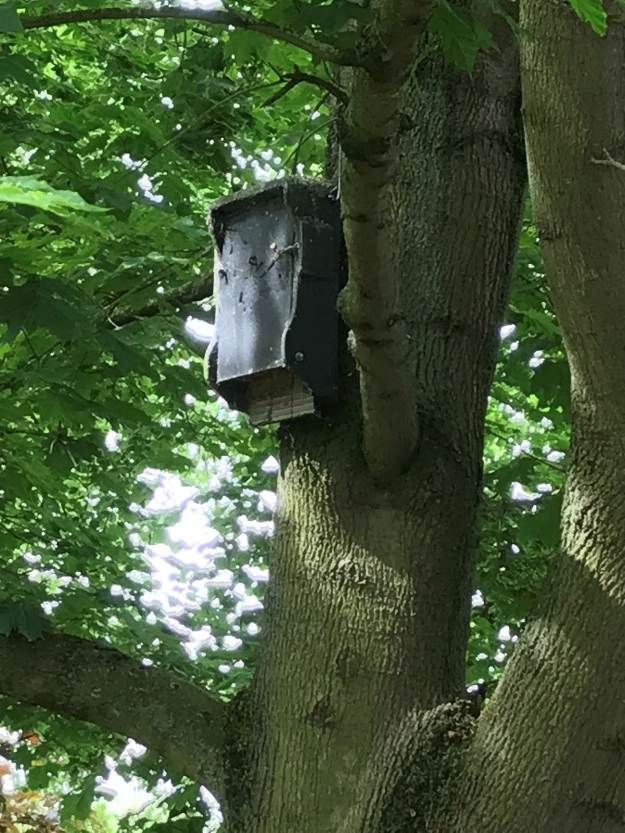
In the summer you may see the tall yellow flower spikes of mullein in the patch of grass just beyond the carpark. In the 19th Century more than forty different common names for this velvety plant were in use, including 'poor man's blanket' and 'hare's beard.' It is the only plant eaten by the jade green caterpillars of the mullein moth - see if there are any making holes in the furry leaves.
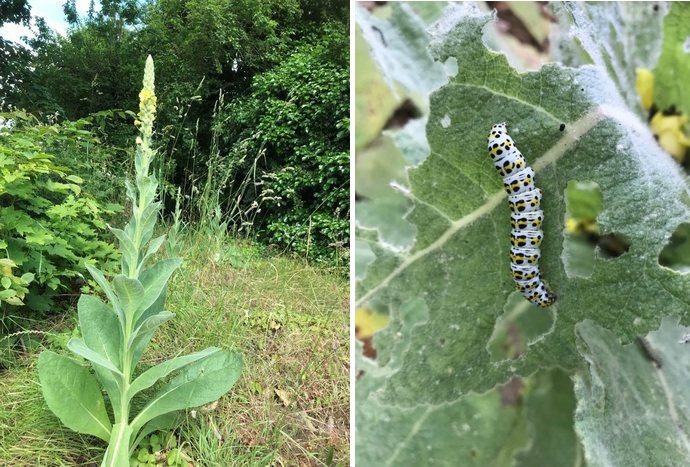
Step 4
Follow the road in between the house called Swan's Corner and the old mill, across a tributary of the Cam on a small bridge with a brick parapet.
Look out for:
The small hawthorn on the left had side of the gates to Swan's Corner will have pink flowers on it in May. There will be violets and hart's tongue fern growing on the brickwork of the bridge in spring and summer.
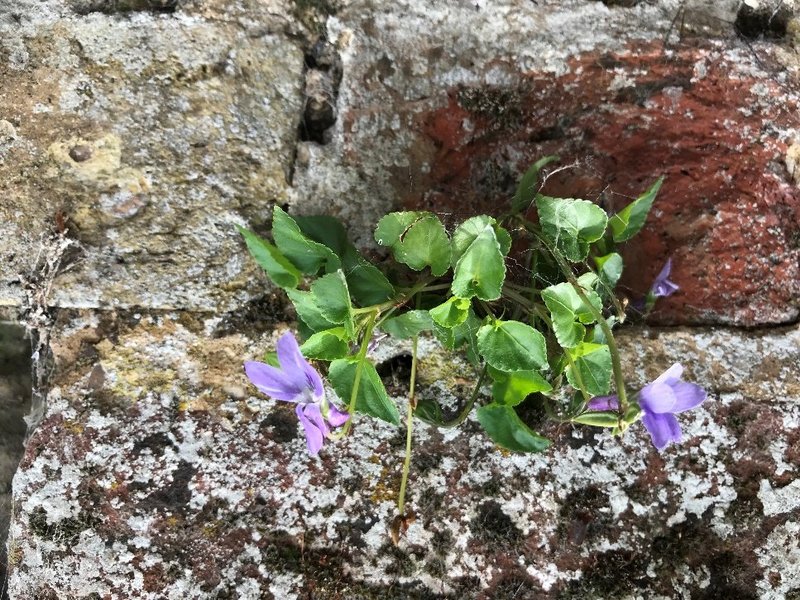
Step 5
Keep going forward onto the public footpath, until you reach the white iron bridge across a second branch of the Cam.
Look out for:
A World War II pill box on your left, surrounded by crack willows. This is a great place to see several of our species of willow tree: the crack willows (named after their habit of shedding branches noisily) give way to white willows, and then at the end of the row there are the most familiar weeping willows.
Enjoy the view across the water meadows, full of different grass species, wiry looking dark green hard rushes, horsetails, rough meadow grass, and willowherb amongst others. You might see dragonflies and bright blue damsel flies hunting above the grass in summer. In the autumn look out for berries on a small rowan tree on your left and elder on your right.
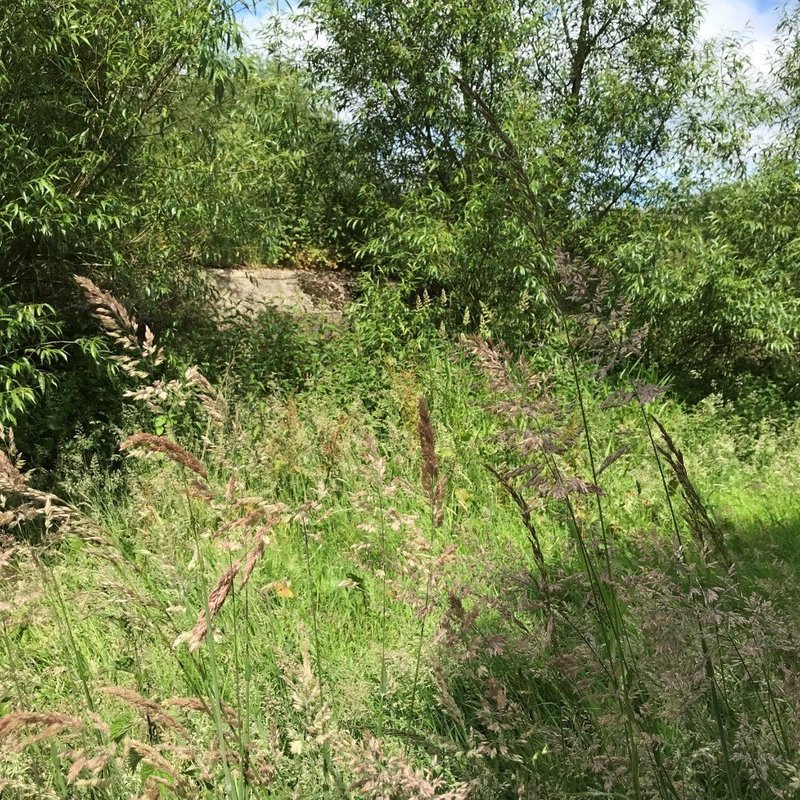
The bridge dates from the 1930s. Standing on it you have a great view of mats of water crowfoot growing in the flowing water, mayflies emerging from the water in early summer, and on the far side, a mature ash tree. In Viking mythology, the world's rivers flowed from the roots of an immense ash tree Yggdrasil, so it's growing in the right place.
Young black poplars have been planted to the southeast of the bridge in memory of Cambridge Professor and expert in ancient woodland, Oliver Rackham. Black poplars are amongst the rarest of our 30 species of native tree, with perhaps only 7000 left in the wild due to drainage of agricultural land destroying their habitat.
This is a good place to look and listen out for whitethroats in summer.
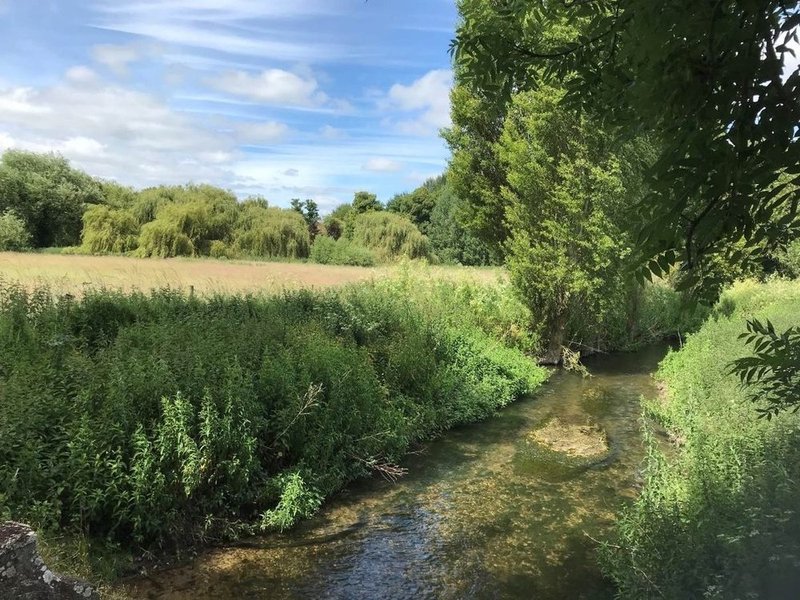
Step 6
Retrace your steps along the path and the road, past the primary school until you reach the corner of Mill Lane and the Lawn. Cross over and turn right to walk along the side of the park.
Look out for:
The first tree on this corner of the lawn is a tulip tree, which as the name implies has yellow tulip-like flowers and distinctive four-lobed leaves. If it were growing in its native Appalachians on the American East coast, it might reach as tall as 150 feet. Native Americans have traditionally used their wood to build canoes, so perhaps it's safer where it is.
Looking back the way you have come, you can see a cherry tree growing in the grass in front of the bungalows, which was planted by and in commemoration of George Rusted.
As you go along the side of the Lawn beside the tennis courts, you'll see a number of medium sized trees with a neat teardrop shape - a form of bird cherry. These have fragrant flowers in April that produce berries that are an important food source for a variety of birds. The bark smells unpleasant, which might be why in Scotland it was called the witches' tree and the timber never used in the home, and in medieval England it was used on front doors to ward off the plague.
Step 7
At the end of the playing field turn left by the sports pavilion and walk along the edge of the lawn to the corner of the park where it meets the Duxford Road. Then turn left towards the zebra crossing.
Look out for:
Just by the cricket nets, there are two tall lime trees, which have fragrant flowers in summer, and interesting seed pods.
Enjoy the shade of the beech and oak trees on this side of the lawn, which gives tall purple-flowered Black Horehound its favourite growing conditions.
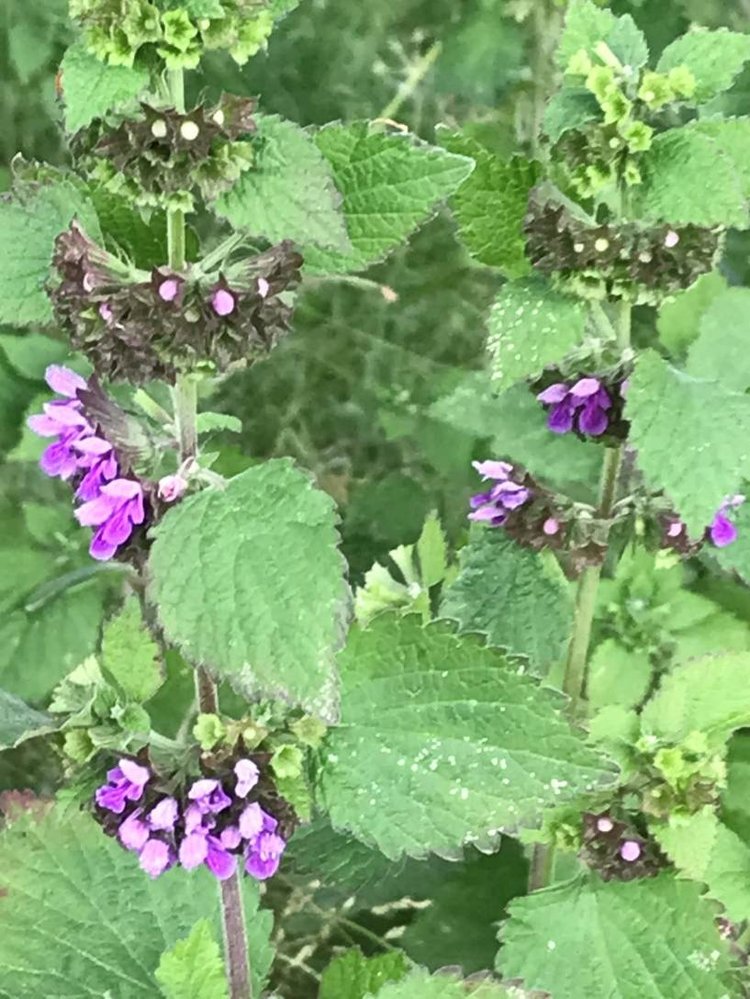
By the zebra crossing you might notice a silvery green shrub, which has purple flowers. This is Lycium Chinense, or The Duke of Argyll's Tea Plant. Amongst many other things the third Duke of Argyll (1682 -1761) was a keen gardener, and it's thought that he helped to introduce this plant to the UK, after being somewhat taken in by an unscrupulous dealer who sold it to him as a tea plant.
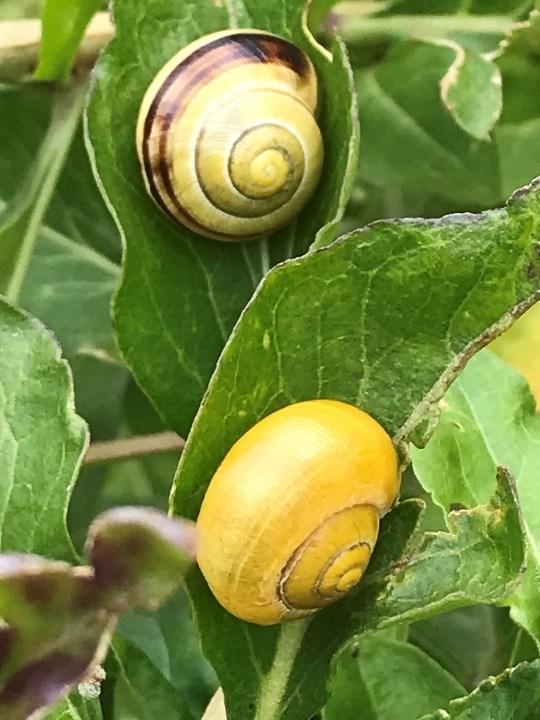
Step 8
Keep walking along the edge of the park, past the parking area, back to the bus stop.
Look out for:
In early summer you should be able to see at least one type of orchid growing in the long grass between the parking area and the bus stop, bright pink pyramidal orchids, and the incredibly structured bee orchids. Orchids thrive where grassland is healthy, and have proliferated here in recent years due to the careful management of this part of the lawn.
The well-staked young trees with slightly yellow-green leaves are a disease resistant form of Elm tree, planted with members of the Eco group from William Westley.
A rich variety of other wildflowers have enjoyed the longer grass in this area, and when you get back to the bus stop you'll be able to pause and enjoy them all.
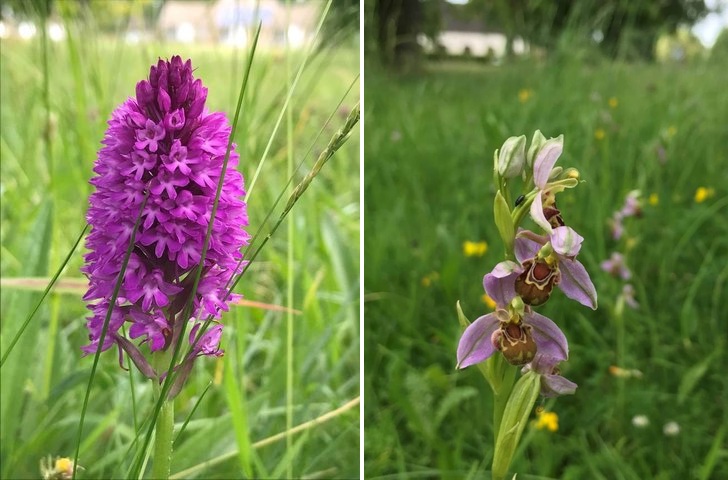
We hope you enjoyed this trail.
Our other nature trails can be found at https://www.ecowhittlesford.org.uk/nature-trails
